I love miso if you haven’t noticed from some of my posts including my most recent Miso 100% WW Sourdough. Not running out of miso requires advanced planning for a couple of reasons. First it takes about a year to ferment the rich red miso that I love and having the koji rice on hand to make the miso. We have a sake maker here in Toronto in the Distillery District which is a good walk from where I live and that is where I have purchased the frozen koji rice.
Making miso is actually quite simple the Aspergillus oryzae does most of the work albeit slowly. For those unfamiliar Aspergillus oryzae is a type of mold that is really important in Japanese cuisine. It is needed to ferment the soybeans to make miso and also to make good soy sauce.
Rather than post the recipe I followed again I’ll just link to my previous post which has all the details.
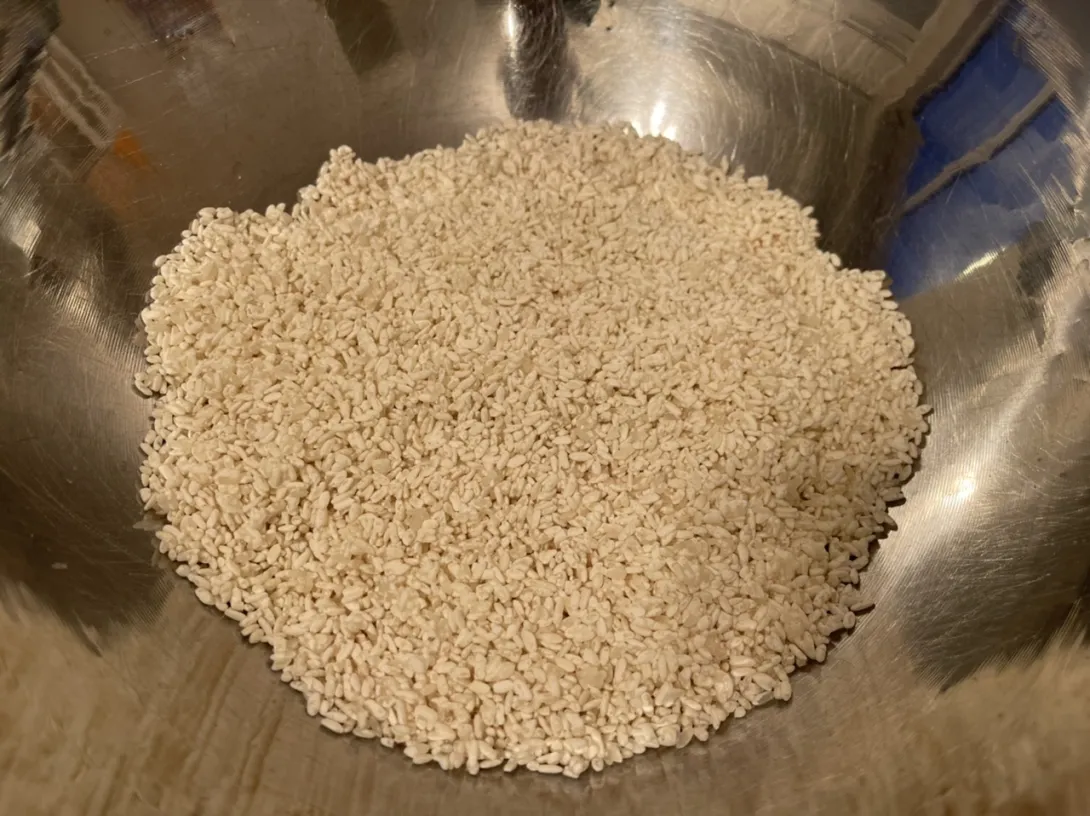
Koji rice and salt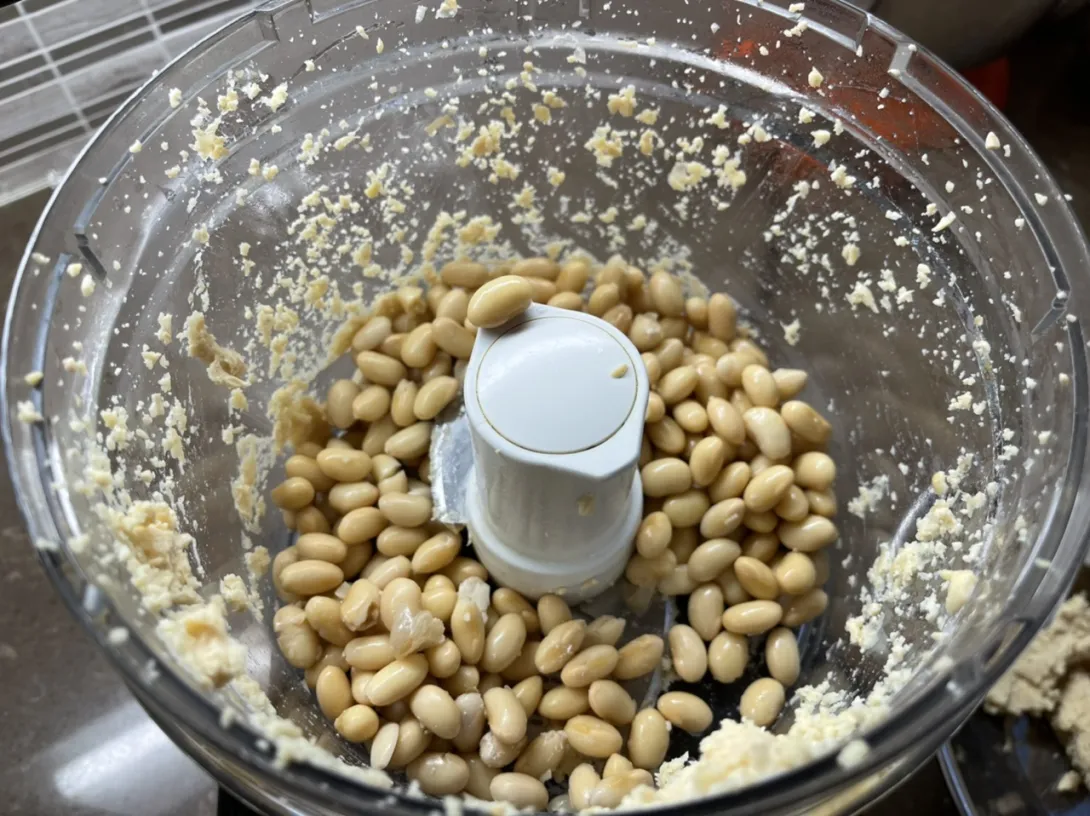
Cooked soybeans in food processor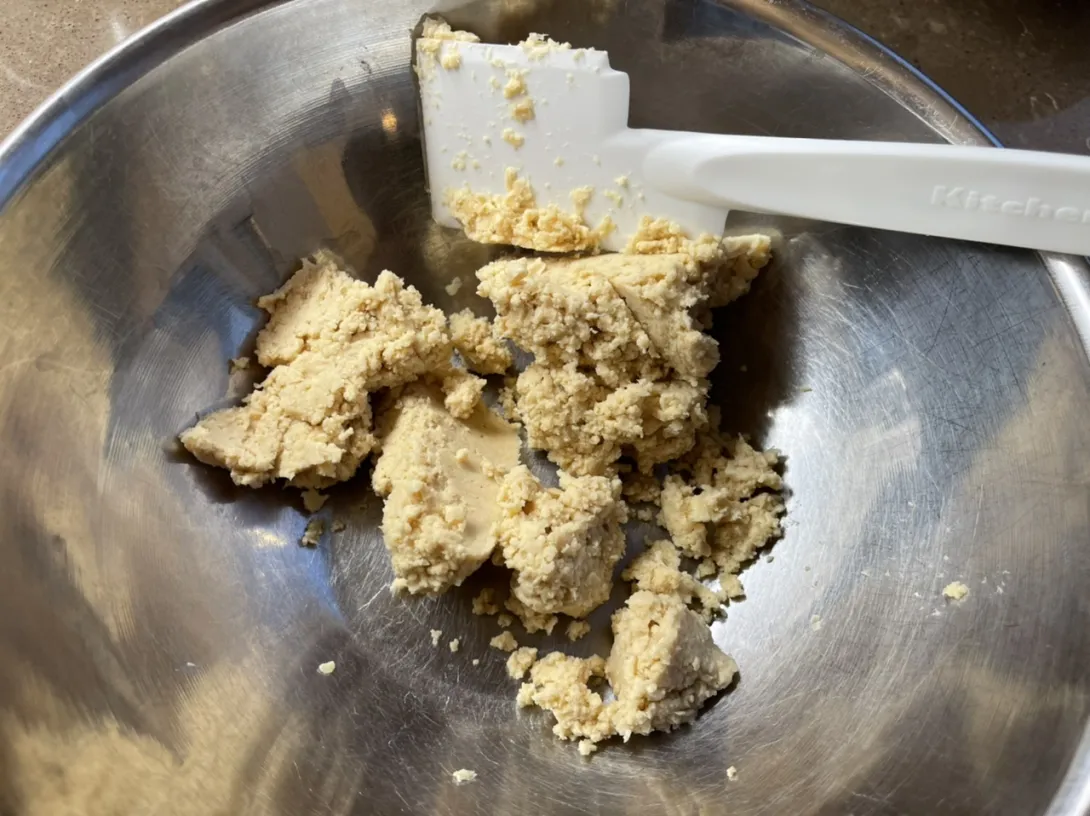
processed soybeans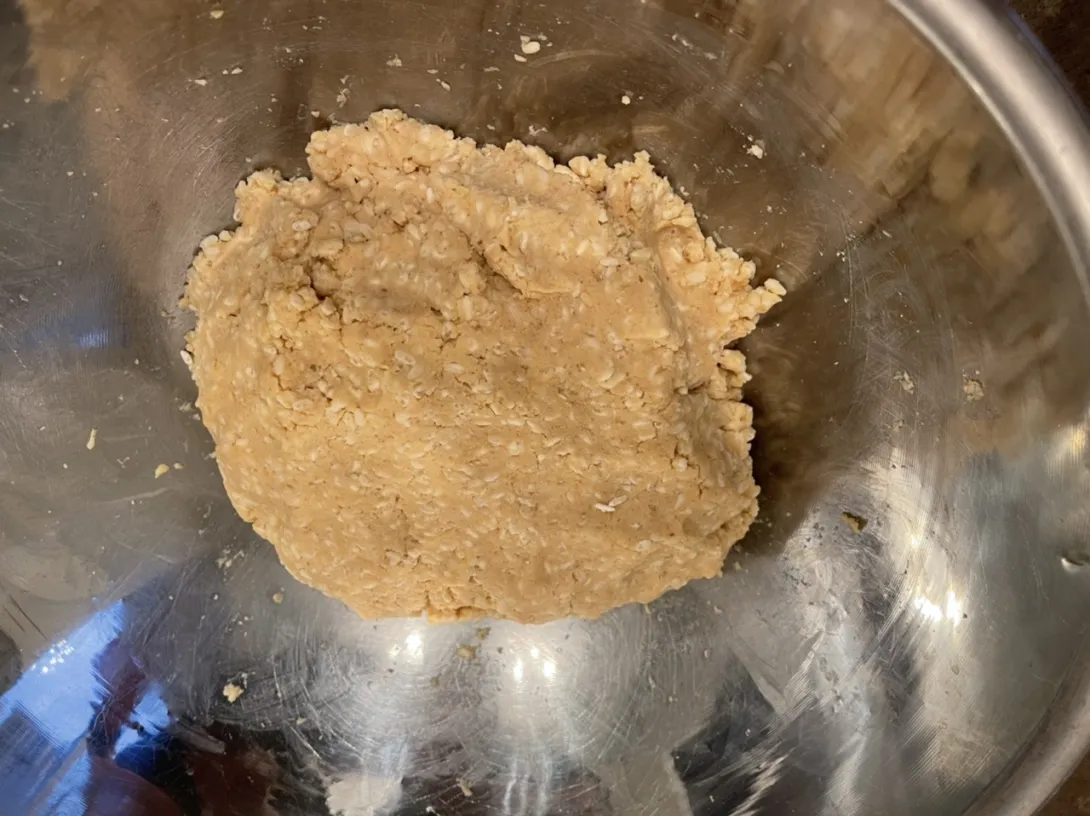
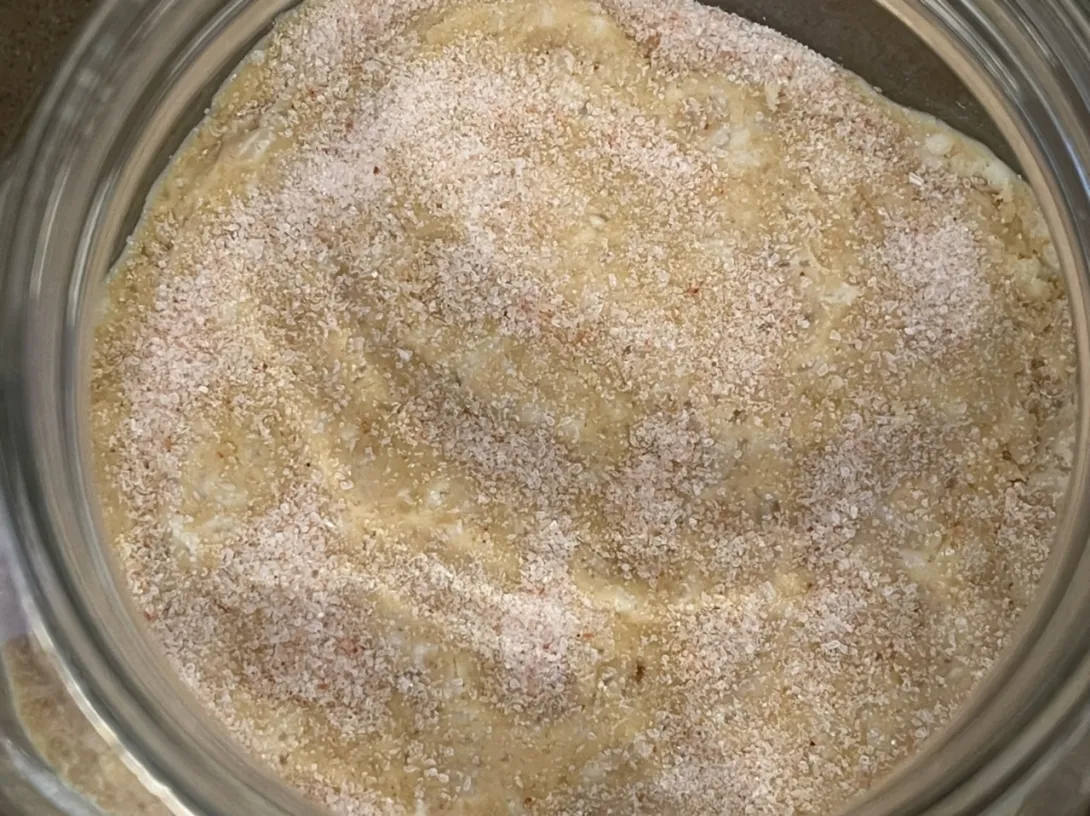
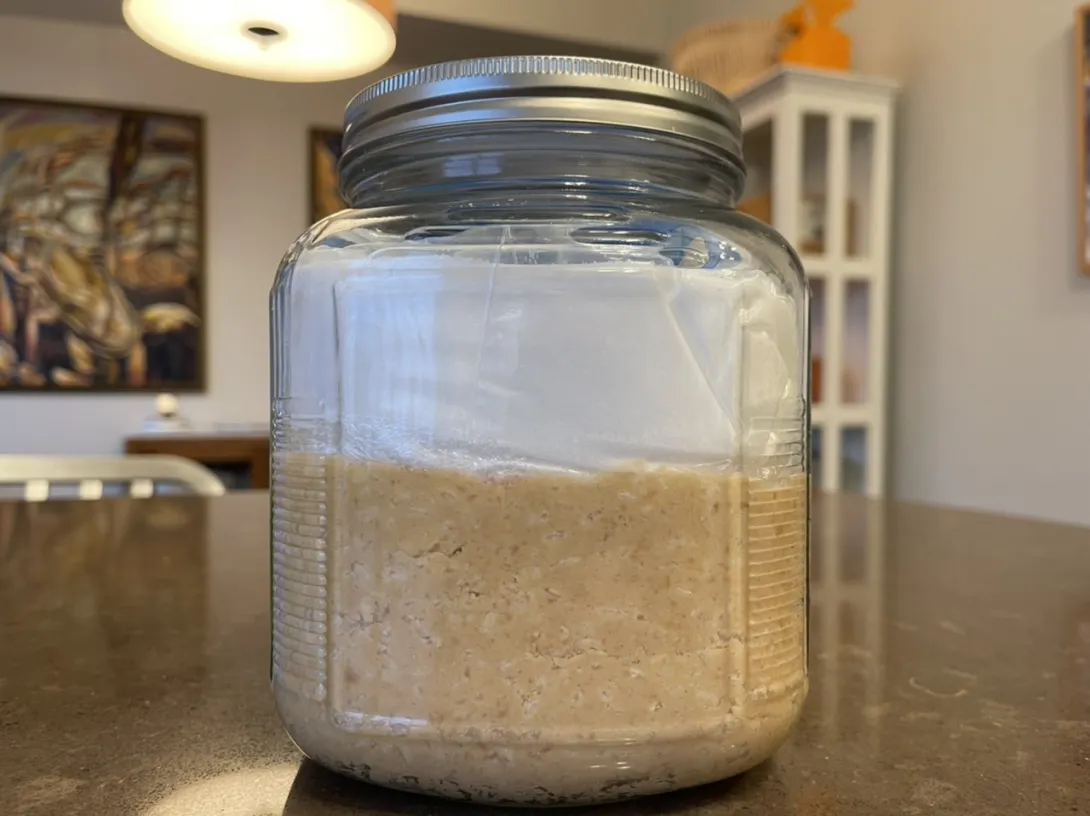
- Benito's Blog
- Log in or register to post comments
Don't recall ever having miso, I am actually not very familiar with Japanese food, but I love drinking soybean milk. Very interesting. Thanks for showing us how it is done.
Really? You’ve never even had miso soup at a sushi restaurant? You’ll need to try at least miso soup at some point, it is very good.
Benny
I will have to make an effort to try that next time I am in a Japanese restaurant. I have not been to a Japanese restaurant for years as i don't eat out that much in the last 10 years.
Let me know when that tub of miso will be ready, I’ll bring an empty jar…
:p
Call me in 365 days Cristi!
Benny
I'm very interested in your miso process. I have bought some in the past and they have lived in the back of my refrigerator for a few years. I must leave them in the front so I remember to use them. Picture below of red and white miso from Japan. Advice please: The miso best before date is 15th Oct 2019. I thought miso was good for years and years. Would you still use it? I bet your home miso would be much better.
Cheers,
Gavin
Hey Gavin, the salt is usually about 5%, I can’t imagine that the miso has gone bad. If you don’t see any mold and if there isn’t any kind of off smell I’m sure it’ll be fine. To tell you the truth before I made my own miso last year I purchased miso and never looked for expiry dates. I never thought it really could go bad with all the salt in it.
You really should try using it, if not for bread start with something simple. I love using it for salad dressings. I use it instead of mustard and whisk it with olive oil, rice vinegar, salt and pepper. To make it even more interesting, a bit of toasted sesame seed oil and a bit of soy sauce can be nice too as a dressing. You can then use this to marinade vegetables or meat and roast or bbq them and it is delicious.
Benny
Thanks Benny. There is no sign of mold or unusual smell. I appreciate the ideas on how I can use the miso. Wonderful! I had it in the back of my mind that some miso in Japan is very very old.
Cheers,
Gavin
For going the extra mile to make miso from scratch.
I love miso soup, and it's also an essential ingredient in my salmon dish, but I don't think I have the patience to wait that long. Therefore, I always have a jar of miso paste the fridge.
Yippee
Yippee, you are very patient. You are the only person I know who planted a citron tree and waited a year (or more) to grow citron fruit which you will then make into candied citron so you can bake a panettone. If that isn’t patience then I don’t know what is?
Benny
That's awesome, Benny.
I love Izumi's sake. My wife's sister and brother-in-law used to work at a sake distillery in Hokkaido and we got a tour there and some top notch sake from the owner who was a family friend.
Izumi reminds me of the same quality. I remember there is something about how much rice is polished before it's used.
My wife has bought their sake curds to make cookies but we haven't tried making miso. I love miso soup and miso-based ramen broth.
I am intrigued!
I know very little about sake having only sipped it a few times in Japan. It’s good to know that Izumi’s sake is of a good quality David.
I’ve never heard of sake curds, I’ll need to look that up. If you enjoy miso, you should try making your own, it really is easy. The tricks are to make sure that the soybeans aren’t too wet when you combine them with the koji rice and salt. Excessive wetness increases the risk of the mold growing during fermentation. Also to reduce that risk, making sure the fermentation container is cleaned with vodka along with the plastic wrap that goes on the surface of the miso. Finally trying your best to avoid air pockets in the miso so really pressing hard on the miso when adding it to the jar. Other than that, you just need patience, or a poor memory so that you forget about it long enough for it to ferment.
Benny
"I remember there is something about how much rice is polished before it's used..."
The grades are referred to as "Seimai Buai," or the ratio of the amt. polished away to the original grain. Additionally, it is not considered a flaw to add in pure brewer's alcohol. These sakes are collectively referred to as "Honjozo" sakes. It's done not to cheapen the sake but rather to open up the aromatics and lessen the sting on the nose and palate, much like a few drops of water in a neat pour of single malt scotch. Some like them, some don't. I like both.
For the Honjozo style, there is an established minimum 70% polish. For sakes without alcohol added, which are referred to as Junmai sakes, table sake has no established minimum polish. Ginjo has a minimum of 60% (i.e., 60% or less remaining after polish). Daiginjo is 50% minimum.
Very cool to me is how critical a role water, mizu, plays. Much like beer brewers taking pride in the source and mineral content of their waters (making a huge impact on the finished beers), to me there's nothing like the quality of fine sakes from small distilleries off beautiful, mountain water. "Miyamizu" still connotes pure mountain spirit. Unfortunately with ubiquitous runoff pollution, wells are more dependable now.
Thank you for the education on sake Paul, I know so little about sake and find that information so interesting.
I loved this one at xmas, which was a junmai ginjo made with spring water.
https://izumibrewery.com/collections/limited-editions/products/izumi-gold-375ml
Sadly I didn't process much of what I was told when I sampled premium sakes brought back from my sister-in-law's distillery in gorgeous boxed bottles... I was too busy savouring every drop :)
Oh by the descriptors that sounds lovely. Right up my alley!
Thanks for sharing your process, like most others here I like fermenting a lot of things and might try it out. Aren't you meant to bury the miso jar?
Also, I've got a jar of Taiwanese miso chili paste in my fridge that I recently used in a bread (and believe it is like or equivalent to Korean gochujang), have you thought of making gochujang?
Hi Jon, I can see how burying the miso would be a good idea to keep it in a dark and cool place. Unfortunately that would be hard for me to do living in a condo.
Embarrassingly I haven’t tried gochujang before, I don’t eat a lot of really hot spiced foods so have no experience with it. I’ll have to buy a small container of it to try and see if I even like it. I’ve never seen Tainwanese miso chili paste before, I’ll have to keep my eye out for it too.
Benny
I’ve been meaning to try making miso but I keep telling myself the wait is too long. Do you taste a difference in the flavor vs store bought?
Benny, I see you’ve tried Tartine Koji Porridge loaf. I also baked this loaf recently, but to really amp up the Koji flavor I substituted about 30% of the water with Amazake. It added a really lovely naturally sweetness, and I’d like to experiment with increasing that % even more.
I also tried culturing cream with Koji last month, using 10% Koji rice to cream by weight, with the ultimate goal to make butter. The first attempt was incredible; the butter had an impossibly sweet cream flavor, with a very subtle mushroomy finish.
I’ve since try to replicate the process twice, but both times resulted in cream & butter with a slight rancid flavor. Still trying to figure out what I’m doing wrong there…
Yes I do taste a difference, the homemade is better for sure. I’m not sure how to describe the difference though, but the homemade seems more complex while the store bought relies a bit more on the salt. Yes it is a bit of a wait, but after you make your first batch if you start a second one right away you’ll have your first one to enjoy. The other thing is depending on how light or dark you want your miso, that will also determine how long your miso takes to ferment.
The cultured cream sounds interesting and something I’d never heard of before, that is a cool idea using koji to ferment that.
I’ve long thought of baking Anpan and leavening it with Sakadane, but I’ll need to get more koji rice and see if I can get that to work. It seems like a bit of work.
Your idea of the koji rice porridge bread interests me, when I made it I felt that the flavor of the koji rice was lost a bit considering the cost of it. However, it you can amp up the flavour by using amazake then it might be worth a try again.
Benny
Nice job Benny! How cool!
I used to brew sake. When I first started (back in the early 2000's) the guys from Momokawa in CA were kind enough to send me some koji-kin (i.e., in case some don't know, the dry "starter" spores, not the live rice culture, which is very perishable). If anyone is interested and wants a good source in the States, this guy was nice to work with.
Wow now that is really cool, I didn’t know you could even buy the dried spores for the Aspergillus oryzae, I’ve never seen that before. But as you say, they aren’t that stable so I guess the way most people get usable Aspergillus oryzae is through koji rice.
Benny
Surprising to me but this batch of miso is changing colour faster than my original batch despite the fact that the original was started in the summer while this was started in the late winter. Temperature of course affects the rate of fermentation of all things miso included. I doubt that the koji rice is the factor because I used the same batch of frozen koji rice for both and in fact was concerned that the koji rice might have been a bit old having been in the freezer for such a long time. I don’t recall my first batch getting this dark already.
Since starting this batch I’ve read that you can inoculate and speed up the fermentation of the miso by adding some of your current miso to the new batch. That makes sense and I’m disappointed not to have thought of that myself because I could use this batch sooner than later as we will run out long before this one is ready.
I’ve started batch #3 now. I think if the 2nd batch tastes good after 3 months, it’ll be white - yellow miso at that point perhaps, I can start using it. My batch 1 is almost gone so I’ll soon be without miso unless I start to use batch #2 soon. I can remove some and allow the rest to continue to ferment at room temperature.
Image

As a stop gap I purchased a couple of months ago some barley miso, aka mugi miso. I wanted to taste it and see if I preferred it to soy based miso. I prefer the soy miso fortunately. Anyhow, that is now gone so I decided to harvest some of my 2nd batch of miso, started about 4.5 months ago, so it is very young and what I’d call a yellow miso. I just tasted it and a big difference between this young miso and the red miso that ages 1 full year is that it tastes saltier despite there being the same amount of salt used per gram of soy beans and koji rice. It is milder tasting miso as expected and it will due until the first batch is fully fermented.
My second batch of miso harvested on Oct 15/22 so at about seven months old. Has good colour but far from a red miso, I’d say a good yellow. But it already has better flavour than when I first used it a couple of months ago.
Miso batch #3 started on May 1, 2022 photo today. This one won’t be touched until we return in the spring from Florida. Hopefully it will be even darker and richer by then. However, we keep the apartment cooler when we are away so that will slow things down a bit.
Miso batch #4 started today.
It seems that we go through at least 1 batch every six or so months depending on the size of the batch and if we’re away very much. Batch number two doesn’t have much left now.
Side by side #3 on the left and #4 on the right. That shows very well the Maillard reaction that occurs over time as the aspergillus oryzae ferments the soybeans and rice.
We are slowly eating our way through batch #3 while batch four ferments so I started batch #5 today. I really enjoy the process of making homemade miso. It is actually so simple especially if you have a pressure cooker and a food processor. I imagine mashing the soybeans would be very time consuming to do by hand. Other than that, it is a simple process of mixing the non-iodinated salt with the koji rice, then kneading the mashed/processed soybean with this mixer. Finally compressing it all into a vessel to ferment for 6-12 months for a deep and rich miso. The aspergillus oryzae then does all the work.
I “harvested” batch #4 of my homemade miso today, it is a bit more than 1 year old and is a great deep red colour. Batch #5 isn’t ready nor do I need more at the moment.
I’m definitely very happy making my own miso. I use a lot of this in my cooking, not only do I save a lot of money on miso, I know my miso is organic and is so much more flavourful than the store bought miso I’ve had.
Very nice, Benny. A labour of love for sure. I've been using miso in our cooking lately since seeing your miso posts. We like pan-fried gnocchi with miso butter, cherry tomatoes and baby spinach. Home made gnocchi is much better than store bought.
Cheers,
Gavin
Your pan fried miso butter gnocchi sounds delicious I haven’t used miso with pasta and it sounds like. Great idea. Thanks for sharing that with me Gavin.
Benny
Batch #5 of my homemade miso is now ready to harvest. It has now been almost 15 months since I started this batch and this I believe is the more fermented that I have made my miso. There is a very good amount of tamari (gluten free soy sauce) at the top of the miso outside the bag of salt that I am using as a weight. I’ll harvest this tomorrow and immediately get another batch going. The sake distillery is no longer selling koji rice to my dismay. We do have a Japanese grocery store that carries koji rice, but of course, when I needed some they only had 454 g which is about half as much as I wanted. I could have purchased a 5 kg bag but I don’t have the freezer space for this to sit for a few years to use up.
Batch #5 of miso has been harvested and placed in jars, this was a much larger batch than my previous ones. Batch #6 was made with the following weights of ingredients:
Koji rice 454 g
Soybeans 524 g
Salt (22%) 215 g
Because I wasn’t able to get as much Koji rice as I wanted I changed the ratio of koji rice to soybeans. I kept the salt as the same percentage of total dry weight. Finally I didn’t clean the fermentation jar and purposely left some residual miso in the jar and added 3-4 tbsp of miso to the new batch in the hopes of speeding up the fermentation by that innoculation.
In the photo, the jar on the left side is part of batch #5 of miso, the central jar is the new batch #6 of miso ready for the long fermentation of at least 12 months. Finally, the jar to the right of the photo is the tamari produced by the fermentation of batch #5 of miso. You can make more tamari during fermentation by keeping the soybeans somewhat wetter or adding some of the cooking water to the fermenting miso. The risk with doing that, however, is that mould is more likely to grow.
Batch #6 of homemade miso. This was started just over a year ago. Batch #5 was such a large one that I am far from having used it up. As a result I am going to let batch #6 continue to ferment for quite a while longer. It has already has darkened quite a bit through the Maillard reaction and I expect that to continue. I do think that not cleaning out the jar as well as adding several tbsp of miso to the new batch has allowed it to ferment faster than usual. I think, as long as I plan ahead and have the koji rice on hand, I will continue to do this. Less cleaning is always good especially when it helps improve the results.